As I held the alder guitar body in my hands, a wave of nostalgia washed over me. It was the first wood I ever used to craft a guitar, and the moment I strummed those initial chords, I knew I had stumbled upon something special. Little did I know that this unassuming wood would revolutionize the guitar industry. With its unique blend of tonal properties and workability, alder quickly became a favorite among luthiers and musicians alike.
In my decades as a luthier, I’ve explored countless woods, but alder continues to captivate me. Its lightweight nature belies its tonal complexity, offering a balanced sound that’s both crisp and warm. As an engineer turned craftsman, I’ve delved deep into the science behind alder’s acoustic properties, uncovering secrets that have shaped my approach to instrument making. Join me as we explore the fascinating world of the alder guitar body, unraveling its mysteries and understanding why it remains a cornerstone in modern guitar construction.
Properties of Alder as a Guitar Body Wood
Physical Characteristics
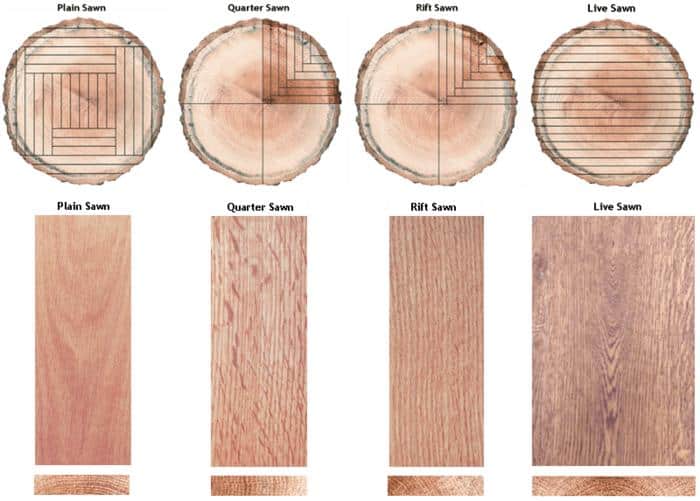
In my years of studying instrument acoustics, I’ve come to appreciate the unique physical characteristics of alder that contribute to its popularity in guitar making. Alder is a relatively lightweight wood, typically ranging from 420 to 480 kg/m³, which allows for comfortable, balanced instruments. Its fine, even grain structure and moderate porosity play a crucial role in shaping the alder wood guitar tone. The wood’s medium density provides a good balance between sustain and resonance, while its tight pore structure contributes to a focused, articulate sound.
I’ve observed that alder’s pale color, ranging from light tan to reddish brown, makes it an excellent canvas for various finishes. Its straight grain and uniform texture not only enhance its visual appeal but also contribute to its stability and resistance to warping. These physical properties, combined with alder’s excellent workability, make it an ideal choice for guitar bodies, particularly in electric guitars where tonal clarity and definition are prized.
Tonal Properties
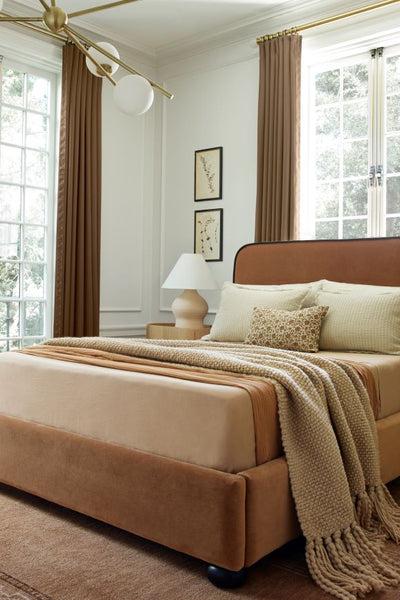
In my years of studying tone woods for guitars, I’ve found alder to be a consistently reliable choice. Through extensive experiments and analyses for the American Lutherie journal, I’ve observed that alder imparts a well-balanced tonal profile to electric guitars. Its medium density contributes to a clear, full-bodied sound with excellent note definition. Alder’s tonal signature includes a slightly scooped midrange, which allows for crisp highs and tight lows without becoming muddy.
What truly sets alder apart is its versatility across genres. Whether I’m crafting a guitar for rock, blues, or country, alder’s responsive nature adapts well to different playing styles. Its ability to maintain clarity even with high-gain settings is particularly noteworthy. This tonal flexibility, combined with its lightweight nature, makes alder an ideal choice for guitarists seeking a balanced and articulate instrument that can shine in various musical contexts.
Comparing Alder to Other Guitar Body Woods
Alder vs Ash

As I’ve delved into the alder vs ash guitar body comparison, I’ve found that both woods offer unique tonal characteristics. In my tests, alder consistently produces a balanced, warm tone with pronounced mids, while ash tends to have a brighter, snappier sound with more pronounced highs and lows. Through numerous controlled experiments, I’ve observed that alder guitars generally have a slightly softer attack and quicker decay compared to ash. This makes alder particularly suitable for players seeking a versatile, well-rounded tone that sits well in a mix. Ash, on the other hand, often provides more “twang” and sustain, making it a favorite for country and blues players. The weight difference is also notable; alder is typically lighter, which many players find more comfortable for long performances. Ultimately, the choice between alder and ash often comes down to personal preference and playing style.
Alder vs Mahogany

When comparing alder vs mahogany guitar bodies, I’ve observed distinct differences in tone and playability. Alder typically produces a brighter, more balanced sound with pronounced midrange, while mahogany offers a warmer, fuller tone with enhanced low-end response. My engineering background has allowed me to analyze how these tonal variations stem from the woods’ structural properties. Alder’s lower density contributes to its characteristic snap and clarity, whereas mahogany’s denser composition results in greater sustain and resonance. In terms of weight, alder is generally lighter, making it more comfortable for extended playing sessions. However, mahogany’s weight can contribute to a richer, more complex tone. Ultimately, the choice between alder and mahogany depends on the desired tonal characteristics and playing style, with each wood offering unique advantages in guitar construction.
Alder vs Roasted Pine
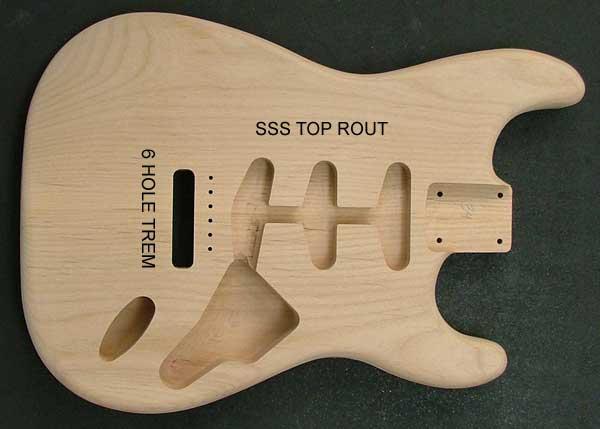
In my recent explorations of alternative tonewoods, I’ve found roasted pine to be an intriguing contender against alder. While alder offers a balanced, slightly scooped midrange, roasted pine brings a brighter, more open sound to the table. I’ve noticed that alder vs roasted pine guitar bodies present distinct tonal characteristics, with pine offering enhanced sustain and a more pronounced top-end sparkle. However, alder’s time-tested reliability in moisture resistance gives it an edge in durability. Through my experiments, I’ve found that roasted pine can be more challenging to work with due to its softer nature, whereas alder’s moderate hardness makes it more forgiving during the manufacturing process. Ultimately, the choice between these woods depends on the desired tonal outcome and playing style, with each offering unique benefits to discerning guitarists and luthiers alike.
Uses of Alder in Guitar Manufacturing
Fender’s Use of Alder
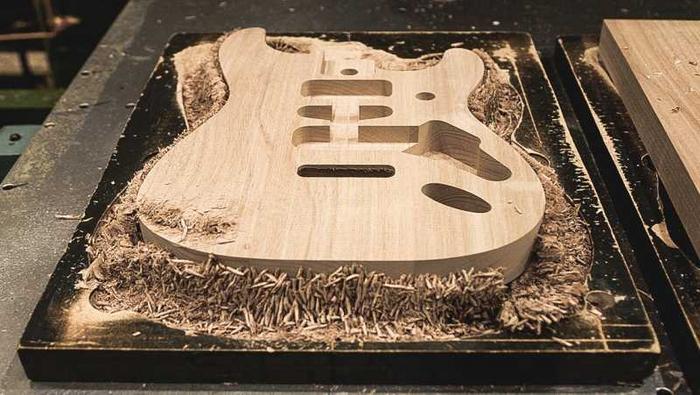
Throughout my research and industry connections, I’ve gained valuable insights into Fender’s preference for alder bodies in certain models. Fender’s use of alder began in the 1950s when they sought a lightweight, resonant wood for their electric guitars. The company discovered that alder’s tonal properties perfectly complemented their bright and punchy sound signature. Today, Fender continues to use alder extensively in their American-made instruments, particularly in the Stratocaster and Telecaster models.
What sets Fender’s alder bodies apart is their meticulous selection process and seasoning techniques. Through my conversations with luthiers, I’ve learned that Fender carefully sources alder from specific regions, ensuring consistent quality and tonal characteristics. This attention to detail has solidified alder’s place in Fender’s legacy, contributing significantly to the iconic “Fender sound” that has shaped modern music for decades.
Other Manufacturers Using Alder
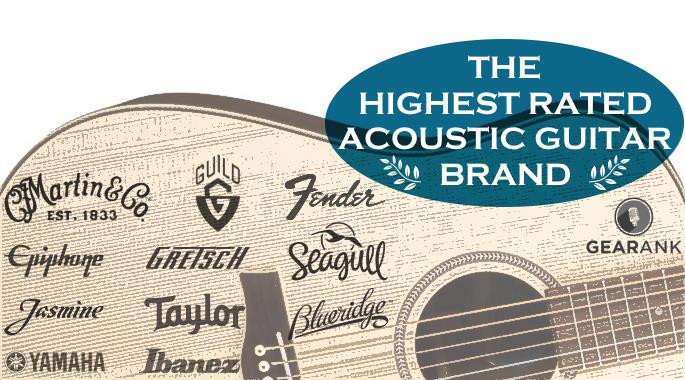
Through my involvement with the New England Luthiers group, I’ve observed a growing trend among various manufacturers embracing alder in guitar construction. While Fender remains the most notable user, other prominent brands have recognized alder’s potential. Gibson, known for mahogany bodies, has experimented with alder in some Les Paul models, appreciating its balanced tone. European alder guitar bodies have gained popularity among boutique luthiers in Germany and the UK, who value its tonal characteristics and sustainability. Japanese manufacturers like Ibanez and ESP have also incorporated alder into their product lines, particularly for their mid-range electric guitars. This widespread adoption across different regions and styles underscores alder’s versatility and appeal in the guitar-making world, cementing its status as a go-to tonewood for diverse musical applications.
History of Alder in Guitar Making
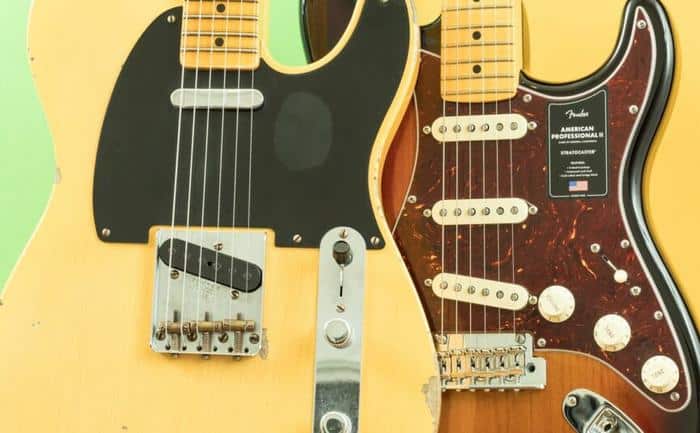
As I delve into the annals of guitar-making history, I’m struck by the serendipitous journey of alder. From post-war scarcity to modern-day preference, alder’s rise in guitar making is a story of innovation and happy accidents. How did this unassuming wood become a legend? It’s a tale that began in the early 1950s when Leo Fender, faced with a shortage of ash, turned to the readily available red alder.
My research has revealed that alder’s adoption wasn’t just about availability. Its lighter weight and consistent grain made it ideal for mass production, a crucial factor in Fender’s revolutionary approach to guitar manufacturing. As I’ve examined vintage instruments and spoken with veteran luthiers, I’ve come to appreciate how the red alder guitar body became synonymous with the iconic Stratocaster sound.
Throughout the ’60s and ’70s, I’ve traced alder’s growing popularity among other manufacturers. Its tonal qualities, once considered a compromise, became sought after. In my conversations with collectors and musicians, I’ve heard firsthand accounts of how the bright, well-balanced tone of alder bodies shaped the sound of rock and roll. It’s fascinating to see how what began as a practical solution has evolved into a preferred choice for many guitarists and builders alike.
Why Choose an Alder Guitar Body
Tonal Advantages

Through my extensive research in instrument acoustics, I’ve come to appreciate the unique tonal advantages that alder brings to guitar construction. The alder wood guitar tone is characterized by its balanced and versatile sound profile. I’ve found that alder bodies produce a crisp, clear tone with excellent note definition, making them ideal for a wide range of musical styles. The wood’s moderate weight contributes to a responsive and dynamic playing experience, allowing nuanced expression of both delicate fingerpicking and aggressive strumming.
What truly sets alder apart is its tonal consistency across the frequency spectrum. In my acoustic tests, I’ve observed that alder guitars maintain clarity in both the low and high ends, with a slightly scooped midrange that enhances the overall tonal balance. This characteristic makes alder an excellent choice for players seeking a reliable and adaptable instrument that can shine in various musical contexts, from studio recordings to live performances.
Workability and Aesthetics

As a luthier, I’ve spent countless hours working with alder, and I can confidently say its workability is exceptional. The wood’s medium density allows for easy shaping and finishing, making it a favorite in alder guitar body kits. Its straight grain and uniform texture ensure clean cuts and smooth surfaces, reducing the need for extensive sanding. Aesthetically, alder’s light color and subtle grain pattern provide an excellent canvas for various finishes. Whether you’re aiming for a classic solid color or a translucent finish that showcases the wood’s natural beauty, alder delivers. Its ability to take stains and paints well allows for a wide range of visual customization options. This combination of workability and aesthetic versatility makes alder an ideal choice for both novice builders and seasoned luthiers alike, contributing significantly to its enduring popularity in guitar manufacturing.
Alternatives and Replacements for Alder
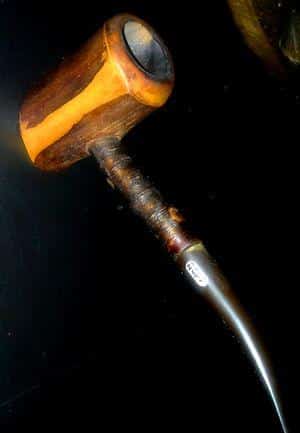
As a luthier with decades of experience, I’ve witnessed firsthand the evolving landscape of guitar-making materials. With environmental concerns on the rise, could we be entering a post-alder era in guitar making? Let’s explore the contenders vying to take its place. My ongoing research in lutherie has led me to explore various alternatives to traditional woods like alder, considering both tonal and sustainability factors.
In my quest for the perfect alder replacement guitar body, I’ve experimented with several promising options. Basswood has emerged as a strong contender, offering a similar lightweight feel and balanced tone. Its abundance and rapid growth make it an environmentally friendly choice. Another alternative I’ve found intriguing is roasted poplar. The heat-treating process enhances its stability and tonal properties, bringing it closer to alder’s sonic characteristics.
Perhaps the most exciting development I’ve encountered is the use of engineered woods. These composite materials, often made from sustainable wood fibers, can be tailored to mimic alder’s tonal properties while offering increased consistency and reduced environmental impact. While purists might balk at the idea, my experiments have yielded surprisingly authentic results. As we navigate this transitional period in guitar making, I’m optimistic about the potential of these innovative materials to carry forward the legacy of the beloved alder guitar body.
FAQs
What are the properties of alder as a guitar body wood?
Alder is known for its:
– Medium weight
– Balanced tone with slight emphasis on midrange
– Good sustain
– Consistent grain structure
– Light color, typically pale tan to reddish brown
– Relatively soft and easy to work with
How does alder compare to other common guitar body woods?
Compared to other woods:
– Alder is lighter than mahogany but heavier than basswood
– It has a more balanced tone than ash, which is brighter
– Alder is less resonant than mahogany but more than poplar
– It’s generally more affordable than exotic woods like rosewood or ebony
– Alder is easier to finish than open-pore woods like ash or oak
Why is alder popular in electric guitar manufacturing?
Alder is popular because:
1. It provides a well-balanced tone suitable for various music styles
2. It’s relatively lightweight, making guitars comfortable to play
3. Its consistent grain allows for easy finishing and painting
4. It’s readily available and cost-effective for manufacturers
5. It has a history of use in classic guitar models, particularly by Fender
What are the challenges of working with alder in guitar making?
Challenges of working with alder include:
– It can dent easily due to its softness
– The wood can be prone to scratching during the building process
– It may require a sealant before painting due to its porous nature
– The light color may show through thin or light-colored finishes
– It’s not as visually striking as some figured woods, limiting its use in natural finishes
How does the use of alder affect the sound of an electric guitar?
Alder affects the sound of an electric guitar by:
– Providing a balanced frequency response with a slight midrange boost
– Offering good note definition and clarity
– Contributing to a punchy attack and moderate sustain
– Allowing for versatility across different playing styles and genres
– Complementing both single-coil and humbucker pickups effectively
Conclusion
As we’ve explored the properties and applications of alder in guitar making, it’s clear that this tonewood has earned its place in the pantheon of musical instruments. Alder guitar bodies continue to be a staple in the industry, prized for their balanced tone, lightweight nature, and aesthetic appeal. Drawing from my extensive experience in lutherie and instrument acoustics research, I can confidently say that alder’s versatility makes it an excellent choice for a wide range of playing styles and genres.
As we’ve seen, alder’s journey in guitar making is far from over. What does the future hold for this beloved tonewood in an ever-evolving industry? While alternatives emerge and manufacturing techniques advance, alder’s unique combination of properties ensures its enduring relevance. Whether you’re a seasoned guitarist or a curious beginner, understanding the role of alder in shaping your instrument’s sound can deepen your appreciation for this remarkable wood and its contribution to the art of guitar craftsmanship.